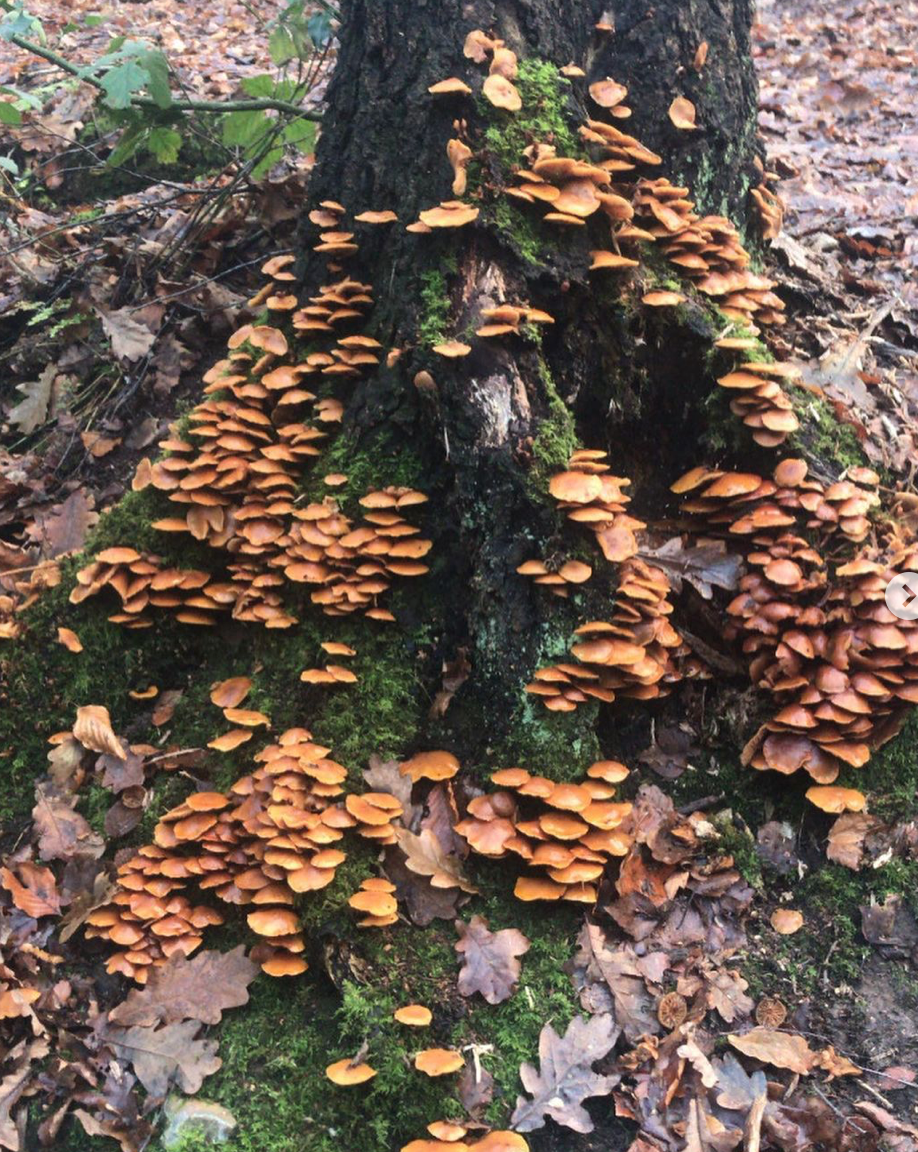❄️Frosty Fungi❄️
- wildlittlewallace
- Dec 22, 2020
- 1 min read

🍄 Most UK fungi (of which there are more than 14,000 species!) are visibly fruiting in summer - autumn. However some have adapted to exploit the niche that is frostier conditions- even surviving being frozen solid!
These charmingly saprobic clusters of tree jewellery are called Velvet Shanks (Flammulina velutipes) and are also known as ‘Winter’s Bounty’ as food is sparse at this time of year. This fungi therefore is a crucial source of winter food for many forest invertebrates!
Wood left to decompose feeds fungi, which feeds invertebrates, which in turn are eaten by wintering birds!
❔Velvet Shank can be identified by:
🍄 The prevalence of their fruiting bodies after November,
🍄 Clustering on dead or decaying wood of Oak, Elm, Ash and Beech.
🍄Wet caps, which start as cream-orange, deepening to brown in the centre of 3-10cm diameter.
🍄 Brown stems and light gills
👉🏽 To see for yourselves, check out the photo as described above!
Did you know that this species scientific name Flammulina means ‘little flames’ and velutipes means ‘velvet legs’ which is very accurate!
Scientists are studying the Velvet Shank’s close cultivated relative ‘Enoki’ Enokitaki mushrooms (see pictures), for it is observed that Enoki farmers who live on Enoki have low rates of cancers (correlation is not causation and so that doesn’t mean that the compound itself cures or prevents cancers!).
Although, proflamin, a compound isolated from Enoki mushrooms was shown to lengthen the life of mice with cancer by up to 85% (Maruyama and Ikekawa, 2005).
📖 If you fancy learning more about mushrooms and their fascinating networks and life cycles, 👉🏽check out @merlin.sheldrakes stunning book called Entangled Life!






Comments